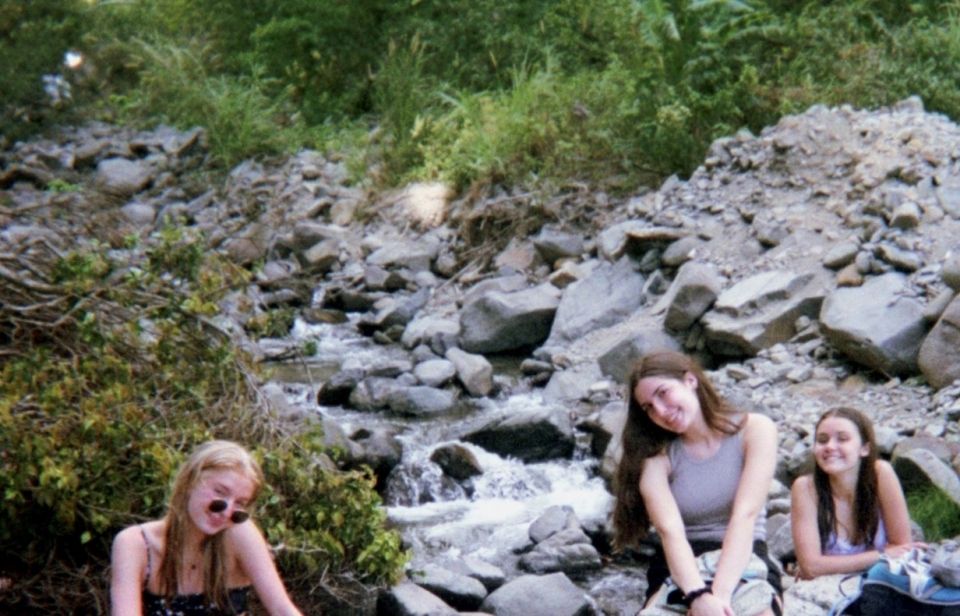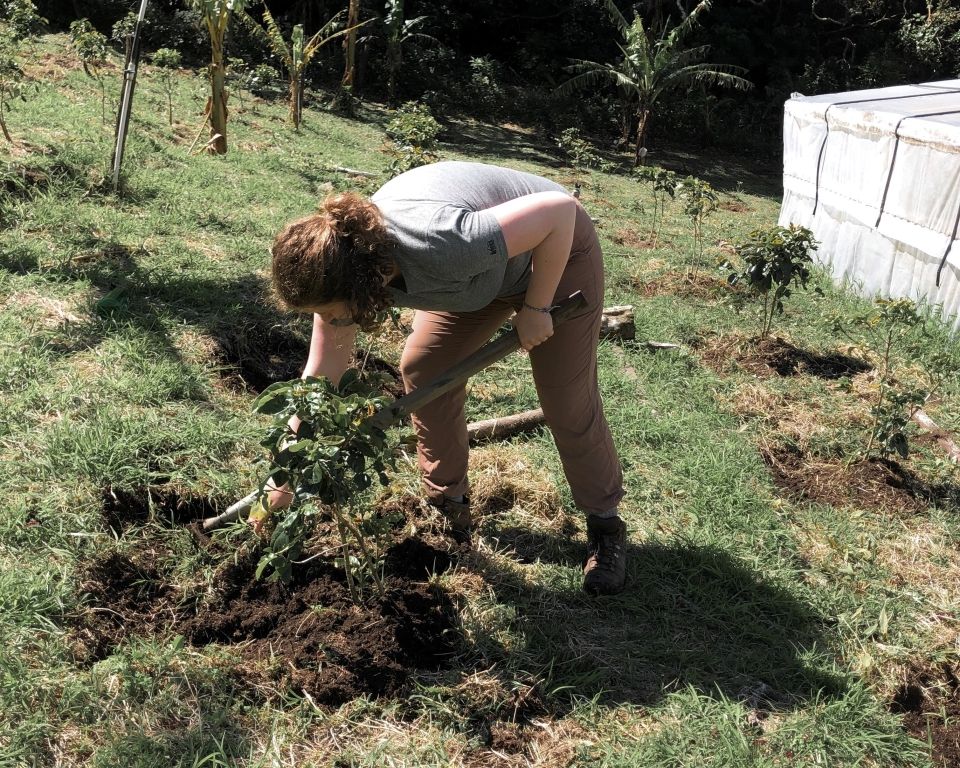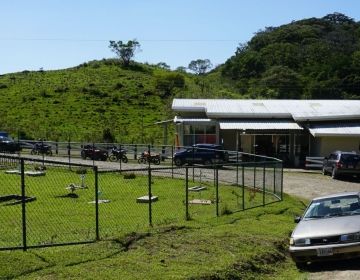CIEE's Climate Warriors
Climate change is among the biggest concerns threatening Monteverde’s famously rich ecosystems. Due to rising global temperatures, the timing, strength, and frequency of cloud cover and rainfall is becoming increasingly unpredictable. Nowadays, there are longer dry periods than ever before, which disrupts the delicate balance of the plants and animals native to this land. Students at CIEE’s Global Institute in Monteverde are immersed in the enchanting cloud forest, studying the effects of climate change here and implementing new ideas to combat them. Block III’s gap year students Mercedes, Kait, and Skye are our campus’s very own “climate warriors”-- trailblazing young women leading the way with their sustainability efforts.
Mercedes’s Project: Engineering a Rainwater Catchment System
Mercedes is designing a system to collect rainwater at the campus’s stable in order to keep the farm running even during periods with no rainfall. She calculated the amount of tap water that is currently used daily at the pig pens, the total being at least 446 L per day. Then, using the size of the roof above the pig pen and average monthly rainfalls, she estimated the lower and higher ends of possible rain collection. The lower end falls during the dry season and would be around 3,500 L for the month of March, while the higher end during the rainy season would be upwards of 21,000 L for the month of October. So, the rain caught in the dry season alone is not enough to cover the daily amount of water used, which is why storing excess water from the rainy season is necessary. By recycling rainwater with her cleverly designed system, Mercedes is helping the campus conserve more fresh tap water!

Kait’s Project: Improving our Frog Ponds
Wetlands are very important as habitats for various creatures, and they are also great carbon sinks. They are particularly essential for frogs and other amphibians that require a consistently moist environment during the rainy season in order to successfully propagate their species. Unfortunately, wetlands have been rapidly disappearing around the world due to climate change and increasingly variable rainfall. So CIEE built some frog ponds in their beautiful botanical gardens. However, due to a small miscalculation when they were originally built, excess runoff flooded down through a cattle trail and onto neighbors’ farmlands. This is when Kait’s environmental engineering skills come in handy-- to keep the neighbors happy and the frog ponds healthy! She is landscaping and hardscaping the ponds with native plants, rocks, and soil harvested from a nearby river to maximize habitat for frogs and other freshwater creatures. Additionally, her work coincides with CIEE’s efforts in water conservation, as she is redirecting the drainage to be used elsewhere-- now, excess water no longer flows recklessly, eroding soil that took years to form or flooding neighbors’ farmland.

Skye’s Project: Fortifying our Sunset Spot Coffee Grove
Skye surveyed the coffee plants at the sunset spot, and of the 500 bushes planted, only around 340 had survived. The major problem area was right next to the greenhouse, where the conditions were difficult for the plants to survive-- it lacked protection from the sun and wind. Equipped with her passion for and knowledge of permaculture, Skye diagrammed the position of each coffee bush in the area and made plans to include various types of plants and trees along with the coffee at the grove. Areas that are more biodiverse are more resilient against the effects of climate change, and increasing the crop diversification will fortify the grove by providing protection from the sun and wind while also providing a habitat for various species. (Fun fact: on average, shade-grown coffee groves attract 30% more birds than their sun-grown monoculture counterparts!) Additionally, CIEE’s shade-grown coffee grove plan will help create wildlife corridors. This is incredibly important because most of the coffee grown in Costa Rica, including ours, is grown on the Pacific slope (the country’s most deforested area), where the life zones of different kinds of habitats are changing over very quickly. With climate change affecting their habitats’ conditions, animals and plants are forced to migrate up-slope— thus, corridors are necessary to assist them with crossing uninhabitable areas. Also, for the sustainability and food security of the campus in general, planting the likes of banana, citrus, mango, legume, and avocado plants is always a good (and delicious) idea! Lastly, in order to prevent erosion or landslides in the rainy season and to ensure water retention during the dry season, Skye is terracing the coffee grove. In tropical places like Monteverde, almost 70% of the nutrients lie not in the soil, but on the layer of organic matter on top of the soil. Thus, it is vital for our habitat-providing plants that those nutrients don’t wash downslope!

Related Posts
Internship Update: Project #1
Wow, time flies here! At just over the two-month mark of my time here in Costa Rica, I finished the first significant part of my sustainable landscaping internship. This post... keep reading
San Luis
Today I wanted to post a smaller blog on the city of San Luis. There are two main cities that people on the CIEE campus frequent often. They are Santa... keep reading
My Homestay Experience in Costa Rica
Adjusting to a new place and culture can be pretty jarring. One thing that can always make it easier, though, is being received with open arms by your new community... keep reading






